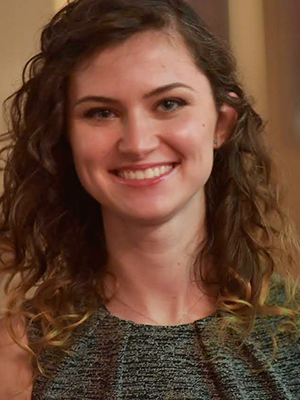Scientific Visualization in Houdini
 |
Presenter
Kalina Borkiewicz
Advanced Visualization Lab
National Center for Supercomputing Applications
University of Illinois at Urbana-Champaign
|
 |
Presenter
AJ Christensen
Advanced Visualization Lab
National Center for Supercomputing Applications
University of Illinois at Urbana-Champaign
|
Borkiewicz's Bio
Kalina Borkiewicz is a visualization programmer in the Advanced Visualization Lab at the National Center for Supercomputing Applications. Her primary work involves writing software that processes and visualizes various types of massive scientific data obtained at supercomputer centers such as Blue waters. In her work Kalina employs Houdini, yt, Virtual Director, and Blue Waters. Kalina contributed to the creation of such films as "A Beautiful Planet" (IMAX), "Solar Superstorms" (fulldome), "Super Tornado: Anatomy of a Mega Disaster" (4K), and "Seeing the Beginning of Time" (4K). She also gave an inspiring talk at TEDxUIUC, a local chapter of the conference, describing her path as a woman engineer.
Christensen's Bio
AJ Christensen is a visualization programmer for the Advanced Visualization Lab (AVL) at the National Center for Supercomputing Applications. He focuses on scripting, scene design, calculation of derived data, and asset management. He is a super-user of visual effects tools like Maya and Houdini, and has contributed to the IMAX films "Hubble 3D" and "A Beautiful Planet", as well as digital fulldome shows like "Dynamic Earth" and "Solar Superstorms". In addition to his film credits with the AVL, he contributed to the science-inspired renderings of a black hole in the Christopher Nolan film "Interstellar" with effects studio Double Negative.
Abstract
This is an introduction to cinematic scientific visualization, through the 3D animation software Houdini. In this seminar, we will introduce Houdini with a few fun hands-on tutorials. We will provide a sample scientific dataset, and we will use Python scripting to import it into Houdini. We will then create a shader, a camera, and a final rendered image of the dataset. No prior programming, scientific visualization, or Houdini experience is necessary.
Session details
When: 10:00 CST, October 25, 2017
Length: Two hours (presentation)
Target Audience: People who are interested in making cinematic visualizations of science data. Primarily scientists who work on spatial simulations and visualization researchers looking to upgrade their toolbox.
Prerequisites: No prior experience required. We assume no knowledge of programming or use of tools.
User Base: Houdini is primarily a Hollywood visual effects tool used for simulating and rendering physical phenomena. This makes it a natural bridge between the graphics and research physics communities. It is gradually being adopted by visualization researchers but it has a large user base in the visual effects industry which makes it easy to learn and seek help.
Software Availability: Houdini requires a paid license; but the free version, Houdini Apprentice, can be used for free for noncommercial purposes with few limitations. There is also a discounted educational license.
Software Requirements: Participants are asked to install Houdini prior to workshop. Houdini Apprentice can be downloaded for free from: https://www.sidefx.com/download
Use Cases: We will introduce the software Houdini and provide an overview tutorial with sample scene files for general data manipulation. We will then write a very short and simple Python script to import a sample dataset into Houdini, which we will render as a finished cinematic image.
Training and Reference Materials:
Sample files, documentation, and downloads are available at http://virdir.ncsa.illinois.edu/NCSAvis/webinar
The Houdini documentation is available online at https://www.sidefx.com/docs/houdini15.0
| 

